Prep soil for winter cabbage plants and broccolini (Best soil for cabbage and broccolini)
How to grow cabbage and broccolini in home garden. This time, we will manage the cultivation of cabbage and broccolini. We’ll prepare the soil for cabbage and broccolini. (Best soil for cabbage plants and broccolini.)
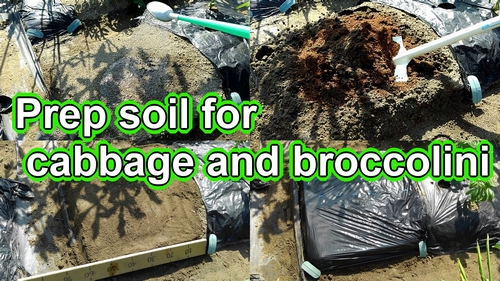
Cabbage grows in which season? We grow cabbage during the fall to winter season, producing winter cabbage plants. Winter cabbage how long to grow? Winter cabbage is planted around mid-September and harvested around mid-November.
We grow overwintering broccolini and nurture it until around March next year.
Prepare the soil for cabbage and broccolini (Broccolini and cabbage farming guide)
How do you soften the soil in the field?
Let’s check the condition of the soil before preparing it for cabbage plants and broccolini. (It’s better to keep the soil in the field as soft as possible, as it improves the growth of cabbage and broccolini.)
The beds used for growing summer vegetables become hard and dry, so we water them to adjust the soil hardness. (When the soil is dry and hard, even if you make beds, it’s difficult for cabbage plants and broccolini to grow well.)
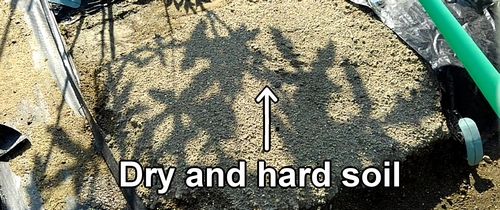
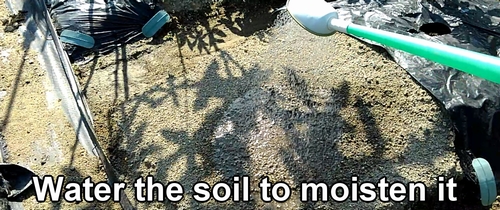
After watering, we’ll use a trowel to blend the soil and water. To make the field soil soft, it might be a good idea to incorporate air into it.
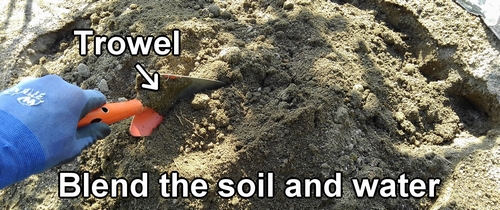
While blending water and soil, we’ll also remove small stones and roots.
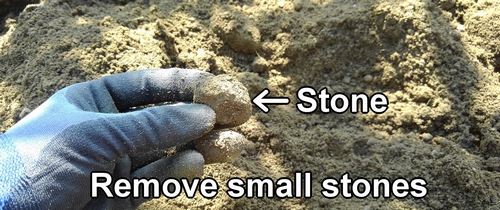
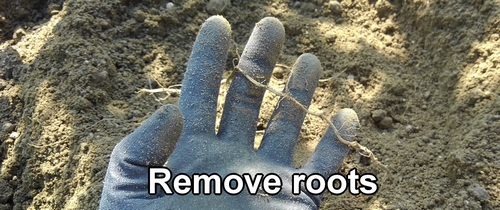
How do you efficiently remove roots from the soil?
By putting your hands into the soil and mixing it in circular motions, the roots naturally entangle around your fingers. Therefore, by removing these tangled roots, you can efficiently deal with them.
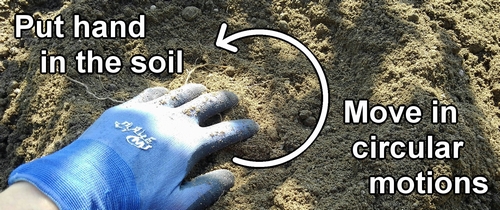
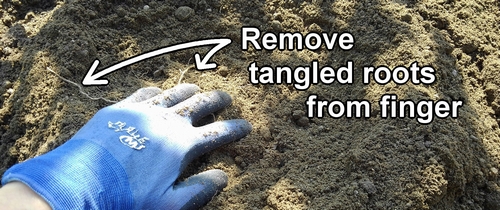
The soil is best when it’s slightly damp from holding some water. (The condition suitable for planting cabbage and broccolini.) Soil that’s too sandy lacks moisture, while adding too much water makes it too soggy, which isn’t good either.
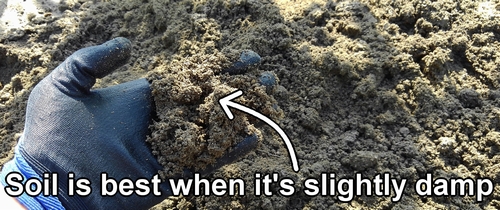
Best fertiliser for cabbages and broccolini (Broccolini and cabbage growing guide)
Next, we’ll add fertilizer for cabbage and broccolini. The bed size is about 60cm × 70cm (about 23 inches × 28 inches) in size.
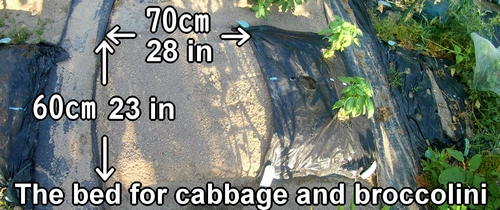
The fertilizers used for growing cabbage and broccolini are fully ripened cattle manure, fully matured chicken manure, and canola cake. As grow cabbage and broccolini organically without pesticides, also use organic fertilizers.
The amount of fertilizer is 1 liter (about 1 qt) for cattle manure, 100g (about 3.5 oz) for chicken manure, and 50g (about 1.8 oz) for canola cake.
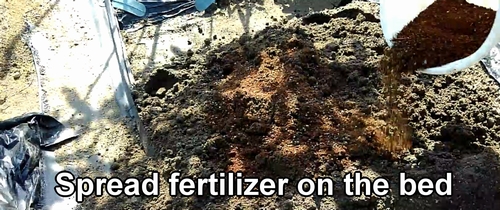
Cattle manure compost has the effect of making the field soil soft. Chicken manure and canola cake are added as basal fertilizer for cabbage and broccolini.
Compost and fertilizer are spread on the bed for cabbage and broccolini, then mixed into the soil. (When mixing soil and fertilizer, use a hoe or shovel.)
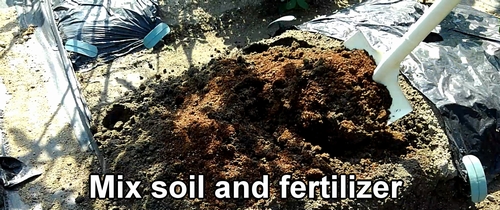
How to make a cabbage and broccolini bed (Broccolini and cabbage growing tips)
After fertilizing the cabbage and broccolini, the next step is to create the bed. Shape the cabbage and broccolini bed with a trowel and wooden boards.
As a tip for making a cabbage and broccolini bed, use a trowel to press the edges of the bed and make it slightly compacted. If you press the edges of the bed, you can maintain the shape of the bed.
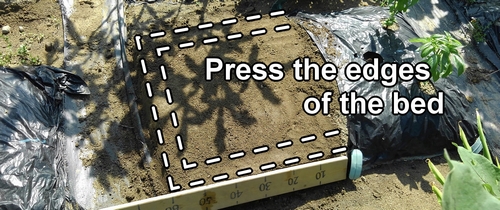
Afterward, cover the cabbage and broccolini bed with black polythene mulch, and secure the mulch with mulch pins. We’ll fold and store the leftover mulch together.
Mulching is a traditional method for making the growing cabbage and broccolini healthy. Mulch will keep the soil moist and the plants clean. Your cabbage and broccolini bed is complete.
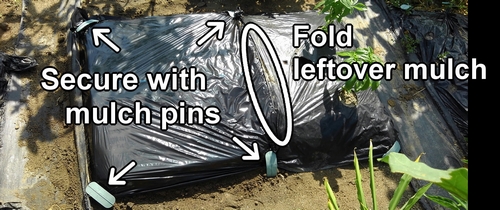
The importance of polythene mulch
The task of “cover the beds with mulch" is quite important for “retaining moisture in the soil". Especially in summer, without mulch sheets, moisture evaporates within about a week, leaving the soil dry and hard. If you want to keep the beds in the field in good condition, make sure to cover them with mulch sheets.
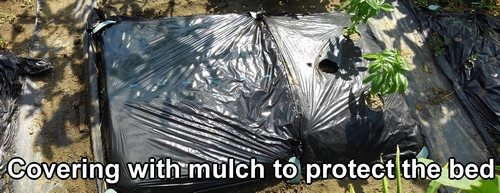
Related information on stem broccoli cultivation(Frequently Asked Questions for growing broccolini)
When is the planting time for stem broccoli? (Transplanting time for broccolini)
The best time to plant stem broccoli (broccolini) is from early to mid September. For brassica vegetables like stem broccoli and cabbage, which grow in fall and winter, planting in September, when it’s still a bit warm, helps them grow well.
When is the best time to add extra fertilizer for stem broccoli? (Timing for side dressing for broccolini)
For stem broccoli, add extra fertilizer about 3–4 weeks after planting. For vegetables grown from seedlings, the starter fertilizer loses its effect around 3–4 weeks after planting. So, it’s necessary to add more nutrients with extra fertilizer.
When is the harvest time for stem broccoli? (Harvest guidelines for broccolini)
The first harvest time for stem broccoli (broccolini) is when you pinch off the main flower bud. The main flower bud is the first bud on the stem broccoli plant. When you harvest this bud, many side buds will start to grow from the side branches. For stem broccoli planted in early September, you can harvest the main flower bud around late October.
Where should I harvest stem broccoli? (How to harvest the flower buds of broccolini)
For stem broccoli, harvest the side flower buds in order, starting with the biggest ones. You can eat both the buds and the stem, so cutting them at a length of 8–10 cm (including the stem) is just right. At first, it may be hard to know where to cut on the stem, but as you harvest more, you’ll get the hang of it.
Following is the video for how-to. English subtitles are available.
















Discussion
New Comments
No comments yet. Be the first one!